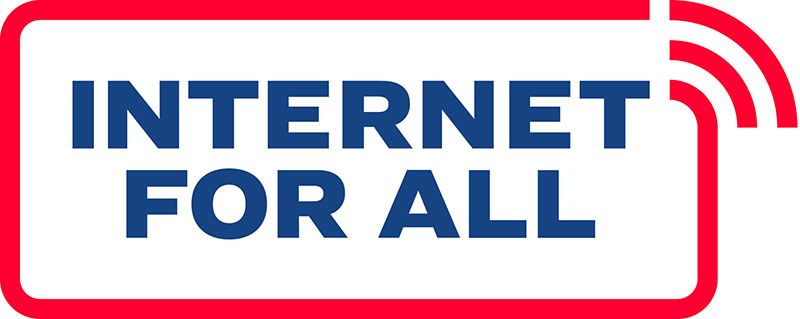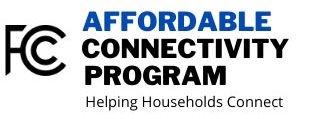The 'Internet for All' Initiative Launches New BEAD Program

In today’s digital era, high-speed internet isn’t a luxury – it’s a necessity. It’s crucial for work, education, healthcare, and keeping in touch with loved ones. Yet, more than 8.5 million households and small businesses are in areas with no high-speed internet, and many more have limited or unreliable service.
What Is the BEAD Program?
The federal government recently unveiled a groundbreaking funding program for high-speed internet infrastructure called the Broadband Equity Access and Deployment (BEAD) program. U.S. states and territories will receive $42.45 billion in funding to improve high speed internet across the United States.
The BEAD program was announced on June 26, 2023, with the goal to provide everyone in the U.S. with affordable, reliable high-speed internet by 2030.
The BEAD program focuses primarily on areas with no internet access or where connectivity is below 25/3 Mbps. This refers to download speeds of 25 Mbps, and upload speeds of 3 Mbps. Areas with speeds under 100/20 Mbps are classified as underserved and also eligible for funding.
Who Is Eligible for BEAD Funding?
The following states, districts, and territories are eligible for the BEAD program:
- U.S. States
- Washington, D.C.
- Puerto Rico
- U.S. Virgin Islands
- Guam
- American Samoa
- The Commonwealth of the Northern Mariana Islands
During the June 26, 2023 announcement, Assistant Secretary of Commerce for Communication and Information Alan Davidson said, “This is a watershed moment for millions of people across America who lack access to a high-speed Internet connection. Access to internet service is necessary for work, education, healthcare, and more. States can now plan their Internet access grant programs with confidence and engage with communities to ensure this money is spent where it is most needed.”
At $42.45 billion, BEAD is the largest internet funding program ever, created under the Bipartisan Infrastructure Law and managed by the Department of Commerce.
Here are some key points about the program:
- Funding awards range from $27 million to over $3.3 billion, with every state guaranteed a minimum of $107 million.
- With this funding, along with other investments from the Biden administration, every resident and small business in all 50 states, DC, and the territories will have the resources to connect to affordable, high-speed internet by 2030.
- 19 states received over $1 billion in funding
Here are the top 10 states to receive the most BEAD funding:
- Alabama
- California
- Georgia
- Louisiana
- Michigan
- Missouri
- North Carolina
- Texas
- Virginia
- Washington
View a state-by-state breakdown of BEAD funding.
More Fiber Internet on the Way
This program also focuses on improving America’s broadband infrastructure and creating jobs along the way. In anticipation of BEAD funding, fiber optic cable manufacturers CommScope and Corning announced expansions of their domestic manufacturing capacity, investing almost $550 million to expand fiber in the U.S.
Fiber-optic internet is indeed the future of broadband in America. Its ability to transmit vast amounts of data at near-light speed is unrivaled. With better fiber infrastructure, we can all enjoy the fastest connectivity across the nation, including in underserved and rural areas.
As we progress towards a more digital future, fiber-optic networks will play a crucial role, supporting everything from remote work and online education to telehealth services and e-commerce, truly transforming our day-to-day lives.
What Is the High Speed for All Initiative?

High Speed for All is a federal government initiative to provide high-speed internet to all Americans. Through this initiative, a variety of programs are available to low-income households and underserved areas.
The High Speed for All initiative is based on the philosophy that broadband can improve the lives of Americans and the nation as a whole.
Education
High-speed internet access can significantly elevate the quality of life in America across several areas. In education, it empowers students to access top-tier learning resources, undertake research, complete homework, and apply to colleges or trade schools.
Economy
Fast internet can bridge the gap between businesses and consumers, opening up new markets, increasing sales, and creating job opportunities. It enables American businesses to compete globally, and for workers, it offers access to work remotely from any location.
Healthcare
In the healthcare sector, high-speed internet supports telehealth services, providing patients with care at their convenience. This not only reduces hospital visits and stay duration but also helps decrease health insurance costs while enhancing patient care quality.
Community
High-speed internet can strengthen communities by acting as a connecting thread. It links individuals to essential services and strengthens the bonds with friends and family, regardless of distance. It also aids first responders in their life-saving missions.
Job Opportunities
In terms of workforce development, high-speed internet access expands education and job opportunities, connecting applicants with training resources for skill development. This leads to a better-qualified workforce that is ready for high-paying jobs.
‘Internet for All’ Programs

The Internet for All initiative administers a variety of programs to help Americans access broadband internet. BEAD is the latest program to be launched under this initiative.
Additional Internet for All Programs Include:
Affordable Connectivity Program (ACP)

The Affordable Connectivity Program (ACP) helps low-income households afford vital internet services. Since its launch, the program has rapidly gained popularity as it makes high-speed internet more accessible and affordable. Millions of households across the country have benefited from this program since it started in December 2021.
Broadband Infrastructure Program
The Broadband Infrastructure Program (BIP) allocated $288 million to bolster partnerships between states and Internet service providers. The program targeted regions lacking internet service, especially in rural areas.
The application window for this program closed on August 17, 2021. The first set of awards was announced on February 23, 2022, and further awards will continue to be made on a rolling basis.
Capital Projects Fund
The Capital Projects Fund is a $10 billion initiative aimed at enhancing the delivery of essential services in rural, tribal, and low-income communities often struggling with reliable high-speed internet access. It is funded by the American Rescue Plan Act of 2021.
States, territories, and Tribal governments that meet the eligibility criteria can apply for funding to establish high-speed internet infrastructure.
Connecting Minority Communities Pilot Program
The Connecting Minority Communities Pilot Program gave $268 million in grants to Historically Black Colleges and Universities (HBCUs), Tribal Colleges and Universities (TCUs), and Minority-Serving Institutions (MSIs). The program assists in procuring internet service and equipment, as well as financing the hiring and training of information technology staff.
The application window for this program concluded on December 1, 2021. Awards continue to be announced on a rolling basis.
Digital Equity Act Programs
The Digital Equity Act, backed by the Bipartisan Infrastructure Law, is a comprehensive initiative aimed at enhancing digital inclusion and equity, with a funding pool of $2.75 billion. The goal of these programs is to ensure affordable, reliable high-speed internet access is available to all communities, fulfilling their needs and enriching their lives.
The Digital Equity Act is comprised of three key federal grant programs:
- State Planning Program: $60 million formula grant enables states, territories, and tribal governments to devise digital equity plans.
- State Capacity Program: $1.44 billion in funding backs states, territories, and tribal governments annually for five years to support digital equity projects
- Competitive Program: This program will fund a competitive grant for digital equity projects. A diverse range of companies can compete for these funds.
Enabling Middle Mile Broadband Infrastructure Program
The Middle Mile (MM) Program is a $1 billion initiative designed to broaden middle mile infrastructure, consequently lowering the cost of providing internet access to unserved and underserved regions.
The term “middle mile infrastructure” typically refers to the connectivity infrastructure responsible for transmitting large quantities of data at high speeds over considerable distances.
ReConnect Loan and Grant Program
The ReConnect Loan and Grant Program is an initiative funded by the Bipartisan Infrastructure Law. It provides almost $2 billion toward covering the costs associated with the construction, enhancement, or procurement of facilities and equipment necessary to deliver high-speed Internet service in qualifying rural areas.
State Digital Equity Planning Grant Program
The State Digital Equity Planning Grant Program provides community-focused solutions to empower individuals with access to broadband internet. Funding goes toward community organizations that help eligible individuals learn how to use the internet.
Target groups for this initiative include:
- Rural residents
- Aging populations
- Low-income households
- Incarcerated individuals
- Veterans
- People with disabilities
- Individuals facing language barriers
- Racial and ethnic minorities
The primary goal of this program is to encourage diverse populations to take advantage of all the benefits that high-speed internet provides.
Tribal Broadband Connectivity Program
The Tribal Broadband Connectivity Program provides $3 billion of funding to help tribal governments improve internet connectivity on tribal lands. This initiative promotes telehealth, remote learning, affordable broadband access, and digital inclusivity.
The program is currently in the process of finalizing awards from the initial funding round. A new application phase is launching soon, providing approximately $1 billion in funding for eligible tribal applicants.
High Speed Internet for All Americans

Currently, 20% of American households do not have internet. That’s why the federal government is providing billions in funding toward improving internet access for all Americans.
Internet access, once seen as a luxury, is now a necessity in our increasingly digital world. It enhances learning, improves our health, and boosts the economy. From education and employment to healthcare and social connectivity, the internet is an indispensable tool that fosters a more connected and informed society. Fortunately, with the help of these high-speed internet programs, all American households should have affordable high-speed internet within the next few years.
2023 Broadband Equity Access and Deployment (BEAD) Awards by State:
| State | Allocation Amount |
| Alabama | $1,401,221,901.77 |
| Alaska | $1,017,139,672.42 |
| Arizona | $993,112,231.37 |
| Arkansas | $1,024,303,993.86 |
| California | $1,864,136,508.93 |
| Colorado | $826,522,650.41 |
| Connecticut | $144,180,792.71 |
| Delaware | $107,748,384.66 |
| District of Columbia | $100,694,786.93 |
| Florida | $1,169,947,392.70 |
| Georgia | $1,307,214,371.30 |
| Hawaii | $149,484,493.57 |
| Idaho | $583,256,249.88 |
| Illinois | $1,040,420,751.50 |
| Indiana | $868,109,929.79 |
| Iowa | $415,331,313.00 |
| Kansas | $451,725,998.15 |
| Kentucky | $1,086,172,536.86 |
| Louisiana | $1,355,554,552.94 |
| Maine | $271,977,723.07 |
| Maryland | $267,738,400.71 |
| Massachusetts | $147,422,464.39 |
| Michigan | $1,559,362,479.29 |
| Minnesota | $651,839,368.20 |
| Mississippi | $1,203,561,563.05 |
| Missouri | $1,736,302,708.39 |
| Montana | $628,973,798.59 |
| Nebraska | $405,281,070.41 |
| Nevada | $416,666,229.74 |
| New Hampshire | $196,560,278.97 |
| New Jersey | $263,689,548.65 |
| New Mexico | $675,372,311.86 |
| New York | $664,618,251.49 |
| North Carolina | $1,532,999,481.15 |
| North Dakota | $130,162,815.12 |
| Ohio | $793,688,107.63 |
| Oklahoma | $797,435,691.25 |
| Oregon | $688,914,932.17 |
| Pennsylvania | $1,161,778,272.41 |
| Rhode Island | $108,718,820.75 |
| South Carolina | $551,535,983.05 |
| South Dakota | $207,227,523.92 |
| Tennessee | $813,319,680.22 |
| Texas | $3,312,616,455.45 |
| Utah | $317,399,741.54 |
| Vermont | $228,913,019.08 |
| Virginia | $1,481,489,572.87 |
| Washington | $1,227,742,066.30 |
| West Virginia | $1,210,800,969.85 |
| Wisconsin | $1,055,823,573.71 |
| Wyoming | $347,877,921.27 |
| American Samoa | $37,564,827.53 |
| Guam | $156,831,733.59 |
| Northern Mariana Islands | $80,796,709.02 |
| Puerto Rico | $334,614,151.70 |
| U.S. Virgin Islands | $27,103,240.86 |